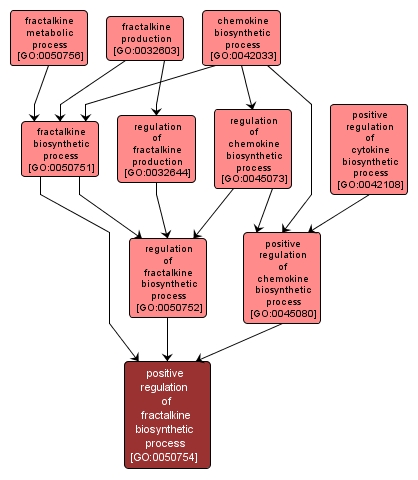GO TERM SUMMARY
|
| Name: |
positive regulation of fractalkine biosynthetic process |
| Acc: |
GO:0050754 |
| Aspect: |
Biological Process |
| Desc: |
Any process that activates or increases the frequency, rate or extent of the chemical reactions and pathways resulting in the formation of fractalkine, a chemokine involved in the control of the key regulatory mechanisms of cell trafficking at sites of inflammation. |
Synonyms:
- positive regulation of CX3CL1 biosynthetic process
- upregulation of fractalkine biosynthetic process
- up regulation of fractalkine biosynthetic process
- up-regulation of fractalkine biosynthetic process
- positive regulation of fractalkine biosynthesis
- stimulation of fractalkine biosynthetic process
- positive regulation of neurotactin biosynthesis
- positive regulation of CX3CL1 biosynthesis
- activation of fractalkine biosynthetic process
- positive regulation of fractalkine anabolism
- positive regulation of neurotactin biosynthetic process
- positive regulation of fractalkine formation
- positive regulation of fractalkine synthesis
|














